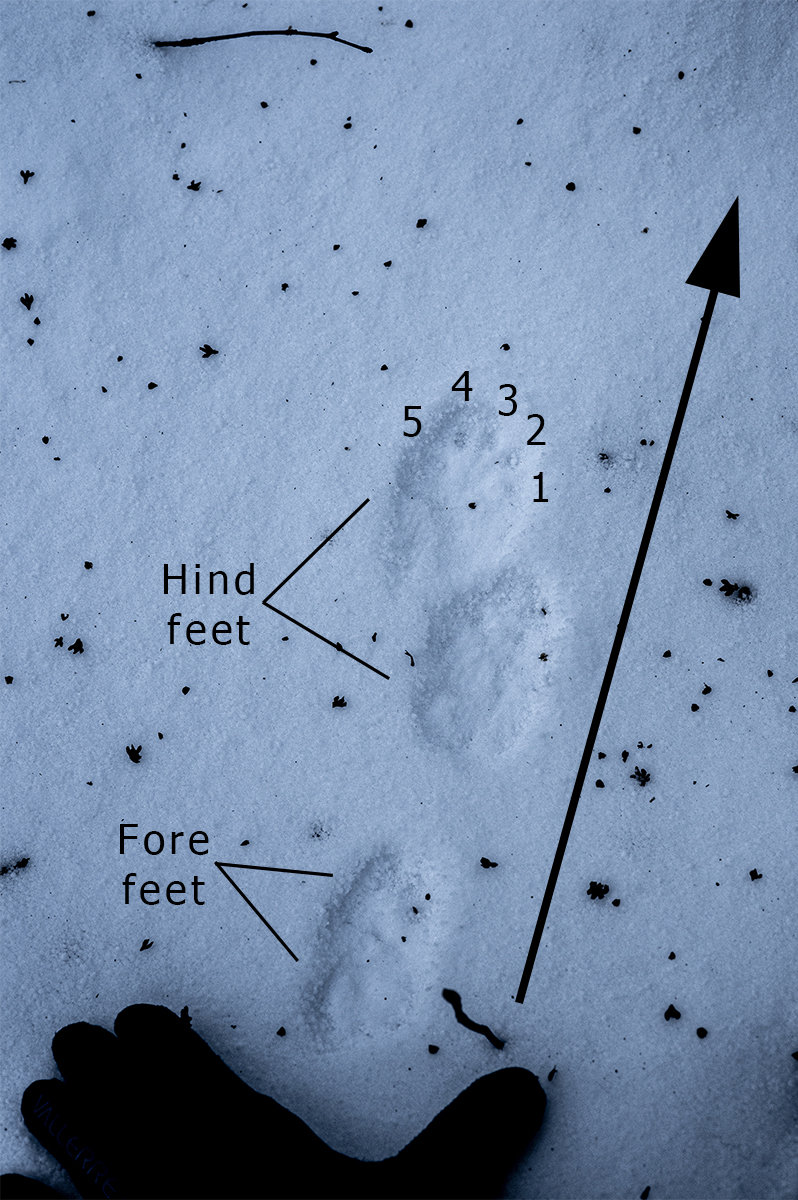
Mustelid Mystery
This weekend, I was hiking in the White Mountains when I came across a conspicuous fecal deposit right in the middle of the trail, so naturally, I just had to take a picture and investigate further!
First, some background as to the habitat and other variables. As I said initially, I was in the White Mountains of New Hampshire hiking up to about 3500 ft in elevation. The habitat I was in was a contiguous, mature northern hardwood forest (northern hardwood forest is comprised predominantly of sugar maple, yellow birch, and American beech) with scattered red spruce and balsam fir. On my way up, I had passed through stands spruce/fir and I could see ahead of me that the northern hardwoods were giving way to contiguous spruce/fir that stretched up to the mountain peaks (over 4000 ft elevation). Other important habitat considerations were the scattered boulders deposited by the glaciers during the last ice age. In addition, the elevation at which I found these tracks was approximately 3100 ft.
So, what did I see…

Seen above is the fecal deposit I initially came across. What immediately caught my eye was the thin, tapered shape of the scat. This suggested to me that it was mustelid (Mustelidae is the family all weasels belong to). There was evidence of small fruit and hair in the scat. Now taking into account my habitat description, this narrowed the most likely options to American marten or fisher.
Looking up from the scat, a thread of tracks wandered away, perpendicular to the hiking trail. Like a bear to honey, I was unable to resist the urge to find out more about this critter. Off I went, tromping through the snow, following and trying to interpret what this animal was thinking based on where it had traveled. The tracks wound in and out of pockets of boulders and fallen trees. Around the bases of the rocks and trees, many smaller tracks of mice and red squirrels were clearly evident. Rodents use the cover of boulders and fallen trees as refuges for shelter but also ease of travel, but in the winter they have the added refuge that snow provides, which allow them to burrow and travel unseen from above. This sort of environment created during the winter is called subnivium (sub meaning under and nivium meaning snow in Latin). Around the edges of the boulders and logs, a ring of snow had been melted away due to the radiant heat transferred from the objects, which absorb heat from the sun, to the snow. These openings in the snow were where this mustelid was focusing its attention.
After a few hundred meters of following the tracks, the tracks suddenly began registering visible prints…


Mustelids have five digits (always count digits like you would on your own hand, starting from the inside and counting out) unlike the four digits of felids (cats) and canids (dogs). In addition, it is common to see paired foot placements (image on the left) when mustelids are loping. When taking pictures of tracks and sign, it’s always best to place a reference object in the frame, such as my hand or, better yet, a ruler, such as on the right.
With clear tracks you can begin to differentiate species easier. Remember back to the beginning, at this point, I was guessing fisher or marten. Both could occur in the habitat I was in so that couldn’t rule either out, but with the tracks, I was able to make a more educated guess. Fishers can weigh three times or more than a marten and have a paw that tends to be wider than longer than their hindfoot (the standard for track measurements is the hindfoot size also shown as “HF”). Despite being smaller, martens have close to the same size hindfoot as a small or juvenile fisher. This means their body weight to surface area ratio is much smaller than a fisher, which allows them to easily navigate across snow like built in snowshoes – wouldn’t that be convenient! Fisher tend to have a hindfoot length of greater than 3 inches, but this track only measured 2 13/16 inches, plus the tracks are noticeably longer than they are wide. This all being said, I would guess this to be a marten.
